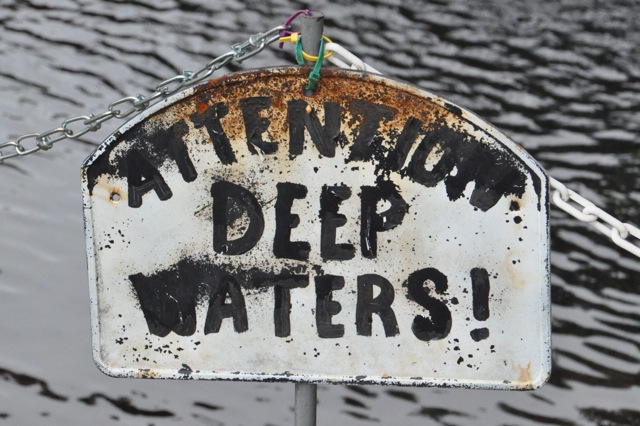BITN: Debt Rits Roof; Homey Gap Years; Retirees Reeling
 Are ‘kids these days’ lazy, entitled, and floating? Or are they truly having a hard time finding financial independence? To find out, jump in and read on…
Are ‘kids these days’ lazy, entitled, and floating? Or are they truly having a hard time finding financial independence? To find out, jump in and read on…
BreakAways in the News has been on, well, on a BreakAway for a while. As usual, we partially blame the interns—who are still discovering their inner work ethic, fascinated by their phones, and often taking advantage of our generous mental-health leave bennies. (And some still live at home!)
Speaking of mental health…though it’s true that travel is BACK—just check out airfare prices—it’s also true that behind that bright & shiny first-class section, the overall financial health for Americans is rather dark. Here are 3 quick stories designed to keep us aware and inspire that commitment you toasted to on 12-31-23 for better fiscal fitness…
Covid brought much grief and angst, but also some pennies from heaven (AKA Washington, DC). Well, those days are gone. Inflation has raised the cost of everything, student loans are again (over)due, and credit card balances have hit a record $1.13 trillion. All together now: OUCH!
What’s more, savings has also declined dramatically. Duh. Ironically, lots of lucky Americans are simultaneously enjoying a booming stock market and impressive increases in their home value.
But both payoffs are often out of way out of reach, including for the kids of comfortable parental units. For more about that (adult) kid in the basement, read on.
- 1/3 of offspring 18-34 living at home
For those of us of a certain age (OK, Boomer), the notion of crashing for months (years?) with the parents was unthinkable. Oh sure, it happened to some people, but not for long. My parents gave me deep roots and giant wings; I flew the coop and, though I visit often, I never moved in again. Yes, I’m proud of that. And a bit agog at the current kiddo hospitality boom.
But I get it: It’s the stupid economy, yet again. In a recent column, Michelle Singeletary (the wonderful personal finance writer/author for the Washington Post) laid bare the realities of the current live-with-the-‘rents trend. And frankly, with some mature boundaries and conversation, it’s not such a bad thing. Ponder these factoids, mostly courtesy of PEW…
• 64% of the young adults say the arrangement has helped their financial situation
• 69% state the level of involvement with their parents in their lives is about right
• 68% look to their parents for advice on their money management
Ms. Singeltary (who is of course an expert in these matters, and admits to having 3 adult progeny at home) asserts that success for all can be found in this acronym:
“Make sure they have a SMART (Specific, Measurable, Achievable, Relevant, and Time-based) plan.”
In other words, there are RULES! Like…Everyone cooks. Rent is free so long as debt is disappearing and saving is happening. Parents get to ask questions—and scream real loud if the kid fails to save yet takes exotic vacations and club-hops like Warhol in the 70s. That’s just enabling, although Andy did NOT live at home and could support himself nicely. (He was also infamous for his frugality; his diaries detail every penny he spent, every day.)
The irony here is that if the adult offspring messes up, you gotta kick ‘em out. What then, dear columnist? I dunno. And as the dad of 2 kids—who are welcome here as long as we co-exist SMARTly—I hope not to find out.
MPR economist and author Chris Farrell recently outlined the rather dire future many Americans face as retirement draws nearer. For starters, 1 in 4 don’t even know how much they have saved. Topping that: A huge percentage are in jobs that provide inadequate retirement benefit opportunities.
Farrell and cronies offer these few ideas for hope…
• Increase the benefits of Social Security (which most people rely on)
• Have the US government offer low- and middle-income citizens a government-run 401K program
• Encourage employers to turn bad jobs into better jobs with improved pay, advancement opportunities, and retirement plans
- $ makes the world go ‘round (or not!)
Debt crises. Kids unable to launch. Wannabe retirees running on empty. We all hope to avoid such crushing woes, right? And use a part of our well-earned savings to reward ourselves with travel, free time (it’s FREE!), and self-care.
When in doubt, consult BreakAway’s 11 Commandments for Fiscal Fitness.
Quiz Tuesday. Please save yourself. And thanks for listening.


 Why is that bucolic scene sitting empty? Because Americans are refusing to take their time—vacation time, sick time, family leave time, PTO, etc!
Why is that bucolic scene sitting empty? Because Americans are refusing to take their time—vacation time, sick time, family leave time, PTO, etc! 

























